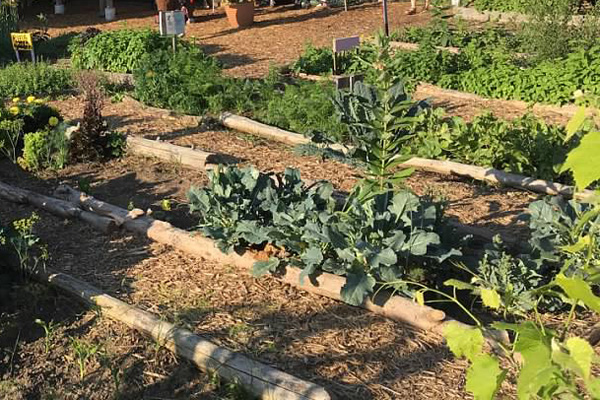8 Simple Techniques For City Blooming
8 Simple Techniques For City Blooming
Blog Article
Facts About City Blooming Uncovered
Table of ContentsRumored Buzz on City BloomingUnknown Facts About City BloomingCity Blooming - TruthsFacts About City Blooming UncoveredThe Single Strategy To Use For City Blooming
Interested in growing food for sale in the City of Chicago? Below is a checklist of often asked inquiries regarding the regulations and laws that cultivators ought to think about when preparing a city farming project.
The zoning amendment does not change any various other codes taking care of composting, building authorizations, purchasing or leasing City possessed property, company licenses or environmental contamination. There are existing codes that manage these issues and they continue to be completely result and may apply to your job. Community gardens are typically possessed or taken care of by public entities, civic organizations or community-based organizations and preserved by volunteers.
Urban farms grow food that is intended to be offered, either on a not-for-profit or for-profit basis. Due to their industrial function, urban farms call for a company permit.
Not known Details About City Blooming
The amount of compost material can not surpass 25 cubic backyards at any provided time according to the criteria in 7-28-715 of the City's Municipal Code. Because the dirt at many brand-new yard sites requires changing, garden compost, soil, timber chips, or various other products can be gotten to build or enhance the growing space.

If a building authorization is required then the hoophouse will be taken into consideration an accessory structure. You can discover out more regarding the building permit requirements by contacting the Division of Structures. The 25,000-square-foot dimension limitation is planned to avoid a solitary community yard from dominating a provided block or taking away from the block's existing household or business personality.
The restriction does not relate to yards situated in Public Open Space (POS) areas. Can there be greater than one area yard that is 25,000 square feet on a single block? Yes. The dimension limitation applies to specific gardens, not to specific blocks. No. Fencing is not required, nonetheless, gardens that have large car parking locations may be called for to mount fence or various other landscaping functions.
The Ultimate Guide To City Blooming
B1 & B2 areas need that all industrial use tasks be conducted indoors. R districts limit business task. The guidelines show the objective and intent of the Zoning Code. Is fence required for city ranches? Yes. Fences might be required, together with landscaping and testing, for sure car parking areas and exterior job or storage areas relying on place and the details task happening.
Yes. Urban farms need structure permits and zoning approvals prior to building. Various other forms of city review might be called for depending upon particular structures, activities, size, landscaping, licensing, public heath and stormwater management problems. Several of these needs are identified in the task layout or permitting procedure, nevertheless, the applicant find out may be accountable to independently recognize particular licenses or permits that might be called for.
Yes. The kind of permit is determined by what is occurring at the site. The Division of Business Affairs and Customer Defense can help identify the specific kind of business certificate that's called for. Yes. Off street car parking is required for many commercial tasks in Chicago. The required variety of garage is based on the variety of workers dealing with website and not the square video footage of the growing space.
The 30-Second Trick For City Blooming

An urban farm can market compost product created on site, nevertheless, the operation should abide with the policies in 7-28-715 of the Chicago Municipal Code. Aquaponic systems are enabled inside your home on metropolitan ranches in numerous zoning areas.
Approximately five hives or nests of honey bees may be kept as an accessory use. Beekeepers need to sign up with the Illinois Department of Farming. For additional information regarding the proposed zoning amendment you may call the Department of Real Estate and Economic Development, Bureau of Preparation and Zoning at 312.744.8563.
Farming in cities and metropolitan locations A city farm in Chicago. Urban farming refers to numerous methods of cultivating. https://us.enrollbusiness.com/BusinessProfile/6739712/City%20Blooming#google_vignette, processing, and distributing food in metropolitan areas. The term likewise puts on the area tasks of animal husbandry, tank farming, beekeeping, and gardening in a city context. Urban agriculture is identified from peri-urban farming, which happens in backwoods at the edge of residential areas.
The Buzz on City Blooming
, that seek to form social networks founded on a common values of nature and area holism. These networks can create by method of formal institutional assistance, becoming incorporated into regional town planning as a "change town" movement for lasting metropolitan advancement.
In either instance, the much more straight access to fresh veggie, fruit, and meat products that might be know with urban agriculture can boost food protection and food security while reducing food miles, resulting in reduced greenhouse gas discharges, therefore adding to environment change reduction. A few of the very first proof of city agriculture comes from Mesopotamia.
Report this page